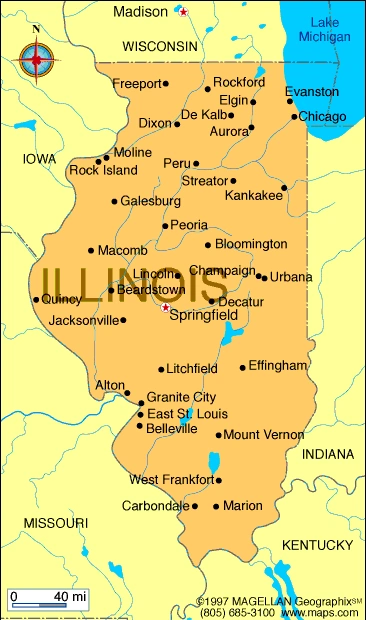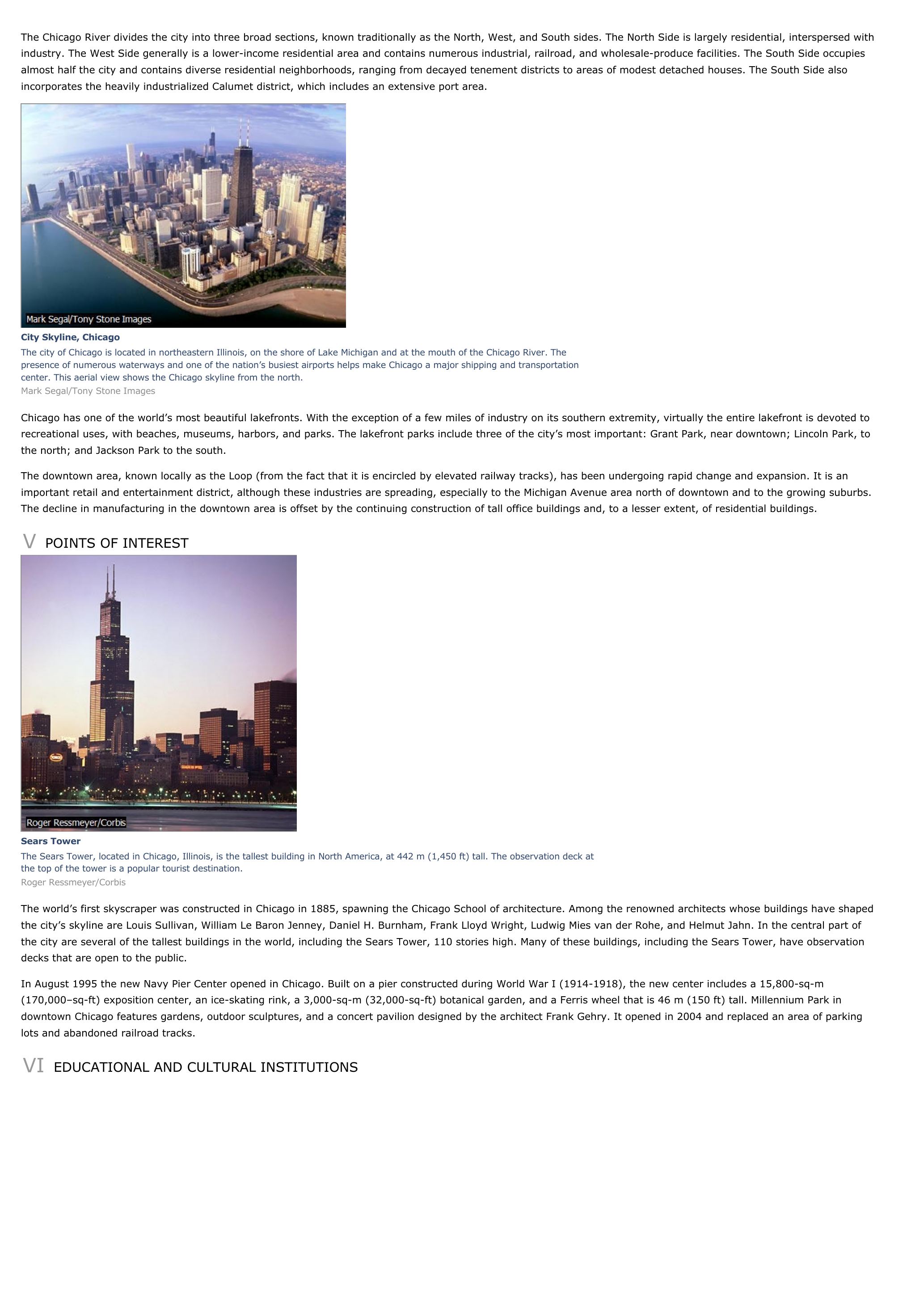Chicago (city, Illinois) - geography.
Publié le 27/05/2013

Extrait du document


«
The Chicago River divides the city into three broad sections, known traditionally as the North, West, and South sides.
The North Side is largely residential, interspersed withindustry.
The West Side generally is a lower-income residential area and contains numerous industrial, railroad, and wholesale-produce facilities.
The South Side occupiesalmost half the city and contains diverse residential neighborhoods, ranging from decayed tenement districts to areas of modest detached houses.
The South Side alsoincorporates the heavily industrialized Calumet district, which includes an extensive port area.
City Skyline, ChicagoThe city of Chicago is located in northeastern Illinois, on the shore of Lake Michigan and at the mouth of the Chicago River.
Thepresence of numerous waterways and one of the nation’s busiest airports helps make Chicago a major shipping and transportationcenter.
This aerial view shows the Chicago skyline from the north.Mark Segal/Tony Stone Images
Chicago has one of the world’s most beautiful lakefronts.
With the exception of a few miles of industry on its southern extremity, virtually the entire lakefront is devoted torecreational uses, with beaches, museums, harbors, and parks.
The lakefront parks include three of the city’s most important: Grant Park, near downtown; Lincoln Park, tothe north; and Jackson Park to the south.
The downtown area, known locally as the Loop (from the fact that it is encircled by elevated railway tracks), has been undergoing rapid change and expansion.
It is animportant retail and entertainment district, although these industries are spreading, especially to the Michigan Avenue area north of downtown and to the growing suburbs.The decline in manufacturing in the downtown area is offset by the continuing construction of tall office buildings and, to a lesser extent, of residential buildings.
V POINTS OF INTEREST
Sears TowerThe Sears Tower, located in Chicago, Illinois, is the tallest building in North America, at 442 m (1,450 ft) tall.
The observation deck atthe top of the tower is a popular tourist destination.Roger Ressmeyer/Corbis
The world’s first skyscraper was constructed in Chicago in 1885, spawning the Chicago School of architecture.
Among the renowned architects whose buildings have shapedthe city’s skyline are Louis Sullivan, William Le Baron Jenney, Daniel H.
Burnham, Frank Lloyd Wright, Ludwig Mies van der Rohe, and Helmut Jahn.
In the central part ofthe city are several of the tallest buildings in the world, including the Sears Tower, 110 stories high.
Many of these buildings, including the Sears Tower, have observationdecks that are open to the public.
In August 1995 the new Navy Pier Center opened in Chicago.
Built on a pier constructed during World War I (1914-1918), the new center includes a 15,800-sq-m(170,000–sq-ft) exposition center, an ice-skating rink, a 3,000-sq-m (32,000-sq-ft) botanical garden, and a Ferris wheel that is 46 m (150 ft) tall.
Millennium Park indowntown Chicago features gardens, outdoor sculptures, and a concert pavilion designed by the architect Frank Gehry.
It opened in 2004 and replaced an area of parkinglots and abandoned railroad tracks.
VI EDUCATIONAL AND CULTURAL INSTITUTIONS.
»
↓↓↓ APERÇU DU DOCUMENT ↓↓↓
Liens utiles
- Chicago (city, Illinois) - geography.
- Siegel ( Donald, dit Don), 1912-1991, né à Chicago (Illinois), cinéaste américain.
- Minnelli Vincente , 1910-1986, né à Chicago (Illinois), cinéaste américain.
- Ernest Hemingway Enfant de Chicago, Hemingway acheva sa scolarité en 1917, puis il partit à Kansas City où il trouva un emploi de reporter au Star.
- Konitz Lee , né en 1927 à Chicago (Illinois), saxophoniste alto américain.

































